It looks like you're using an Ad Blocker.
Please white-list or disable AboveTopSecret.com in your ad-blocking tool.
Thank you.
Some features of ATS will be disabled while you continue to use an ad-blocker.
share:
originally posted by: cooperton
originally posted by: wolfenz
Common depictions Across many North American indigenous cultures, the thunderbird carries many of the same characteristics. It is described as a large bird, capable of creating storms and thundering while it flies.
The thunderbird was given its name because it would show up whenever there was a thunderstorm, so by correlation, the indigenous people thought it was causing the thunder. Hence the name. This:
“The thunderbird appears in many Indian tales and Indian art work. Its description is very much like one of the prehistoric flying reptiles that flapped its way through the skies in the days of the dinosaurs.”
-Geis, D., Dinosaurs and other prehistoric animals, Grosset & Dunlap, New York, p. 10, 1972.
“One time Thunderbird got a big whale in his talons and carried him to Beaver Prairie and ate him there. The whale fought very hard before he was killed. Thunderbird and Whale fought so very hard that they pulled up the trees by their roots. And no trees have ever grown in that place to this day.”
-Tales From the Hoh and Quileute” in Journal of American Folklore 46:320, 1933
“We showed the Indians pictures of pterodactyls and such and they said, ‘Yes’, that had to be the giant bat. For them it is not a myth or legend, but a true story of their past that has been handed down through the years.”
etc, etc...
Good find
This is the Legend of North America .. and has been spread to Coast to Coast ... of Similar Tales...
In South America its Called the Flying Serpent GOD... Quetzalcoatl or Kukulcan
So that's, The New World ( Americas ) , Take On Dragons ..
Huge Flying Giant Beasts With Descriptions of the Same as
Chinese's or European Dragons ( Horns ) ( Beaked Teeth )
Sounds More Like a Pterosaurs that Were Real and HAD Exist , then Anything.. Else..
Yet they have been extinct, Many IONS Ago ..
Pterosaurs Flying Reptiles ( Resemblance of (Horns) and Beaked Teeth )
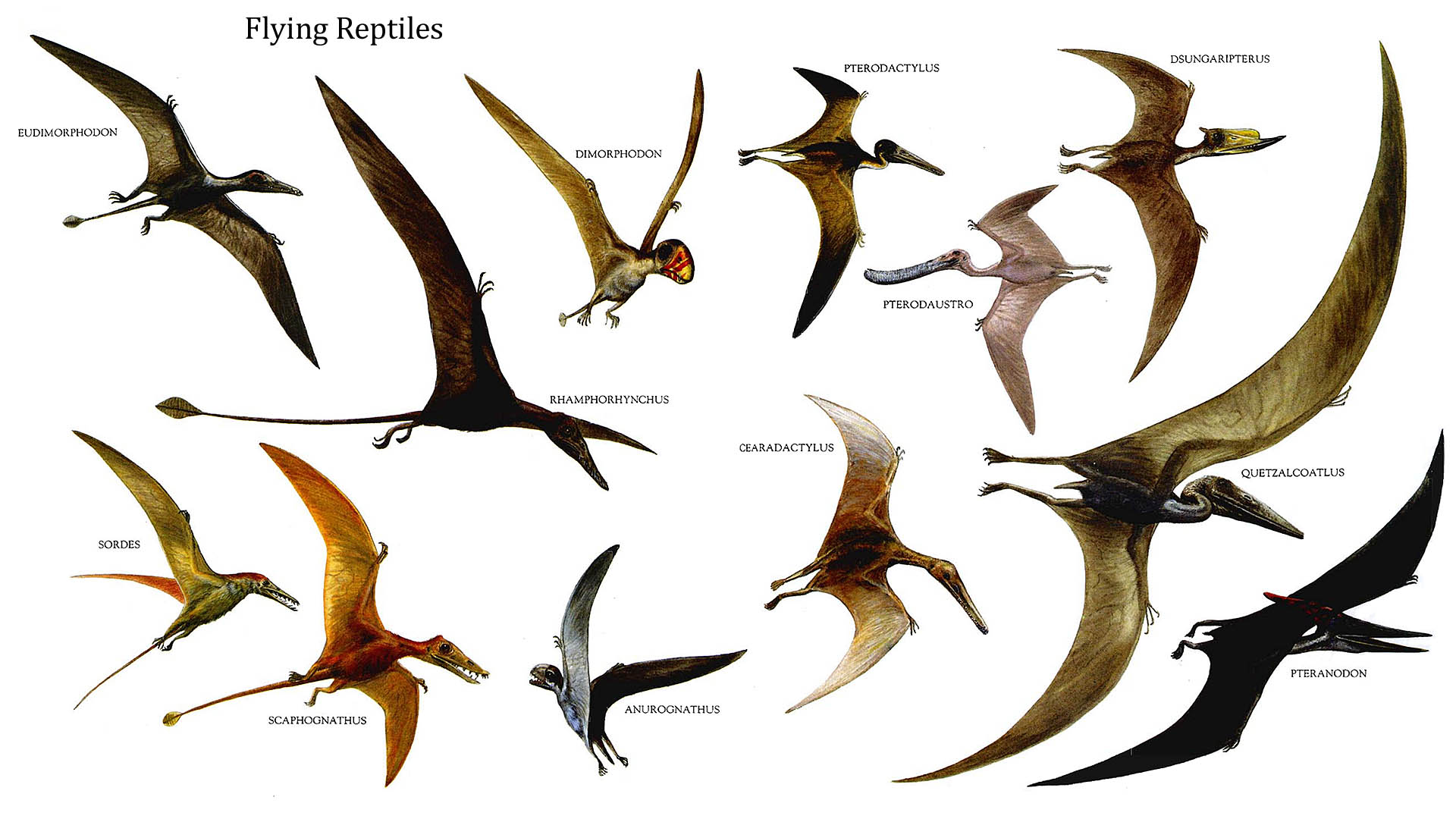
The Biggest Flying Bird Compared to the Birds that exist Today ..

If Dragons ... Are Dinosaurs or Pterosaurs
and the Carving ,Drawings , Painting Sculptures to Tapestries.. from The Dark Ages to Medieval Europe to Ancient China have Shown . some Resembling Dinosaurs of what we know of Today ..
The Question People Need to Ask is
How Did the Artist know what a Dinosaur Look Like, let alone a Dragon .. ? a Coincidence ? Perhaps ..
Did they somewhat existed ? Just a misinterpretation of a Pterosaurs ..
It Funny to know that Scientist thought
This Late Cretaceous Devonian Fish Once thought extinct
is Alive And Well..
Coelacanth
en.wikipedia.org...
From that ...
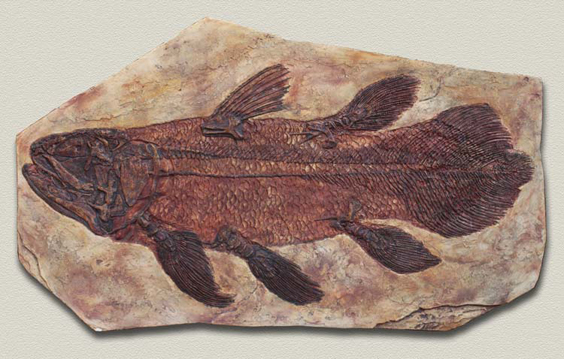

The Dinosaur & Pterosaurs Debate Is Questionable to Me
I Don't Believe in the Creationist only 6 thousand years Bull# ..
From Live Science
Reference:
Are Dragons Real? Facts About Dragons
by Benjamin Radford, Live Science Contributor | December 10, 2014 09:49pm ET
www.livescience.com...
It's not clear when or where stories of dragons first emerged, but the huge, flying serpents were described by the ancient Greeks and Sumerians. For much of history dragons were thought of as being like any other exotic animal: sometimes useful and protective, other times harmful and dangerous. That changed when Christianity spread across the world; dragons took on a decidedly sinister interpretation and came to represent Satan. In medieval times, most people who heard anything about dragons knew them from the Bible, and it's likely that most Christians at the time believed in the literal existence of dragons. After all, Leviathan — the massive monster described in detail in the Book of Job, chapter 41 — seems to describe a dragon in detail:
"I will not fail to speak of Leviathan's limbs, its strength and its graceful form. Who can strip off its outer coat? Who can penetrate its double coat of armor? Who dares open the doors of its mouth, ringed about with fearsome teeth? Its back has rows of shields tightly sealed together; each is so close to the next that no air can pass between. They are joined fast to one another; they cling together and cannot be parted. Its snorting throws out flashes of light; its eyes are like the rays of dawn. Flames stream from its mouth; sparks of fire shoot out. Smoke pours from its nostrils as from a boiling pot over burning reeds. Its breath sets coals ablaze, and flames dart from its mouth" (NIV).
edit on 32015WednesdayfAmerica/Chicago6174 by Wolfenz because: (no reason given)
edit on 32015WednesdayfAmerica/Chicago6174 by
Wolfenz because: (no reason given)
From what the OP has posted a Creationist Site
about Dragons ...
just to Note
The Uncanny Resemblance of those OLD Medieval Paintings Drawings to Tapestries...
of a Komodo Dragon
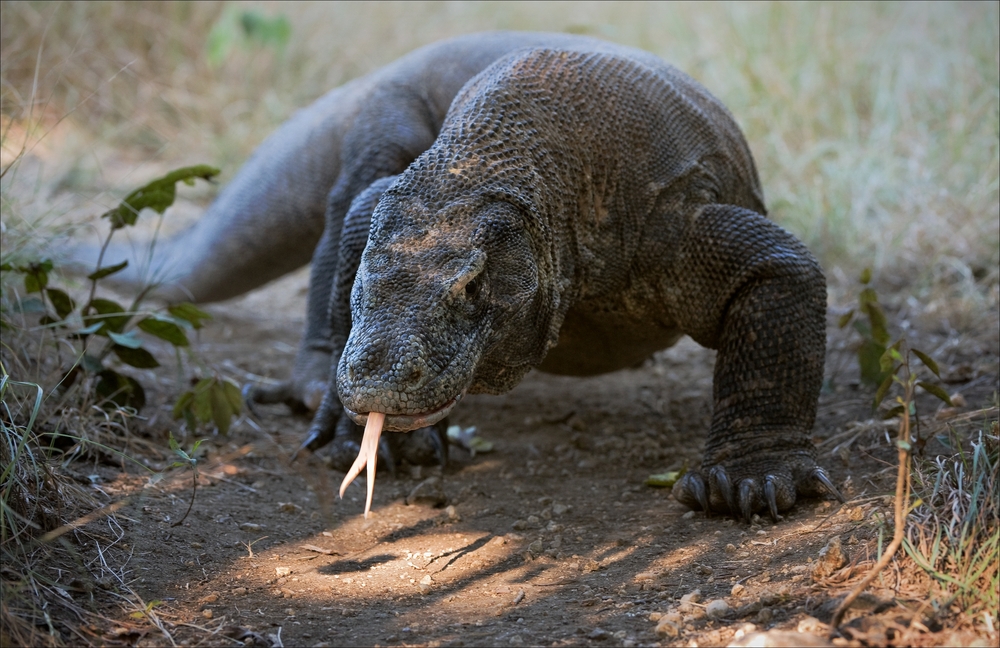
or a Monitor Lizard

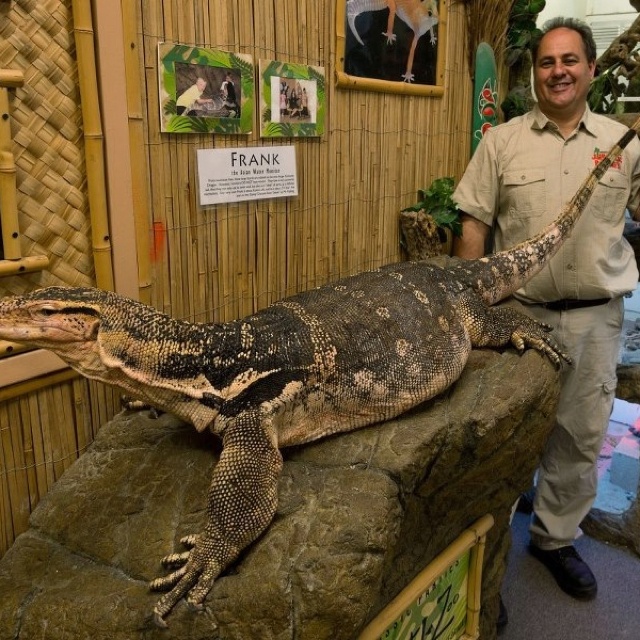
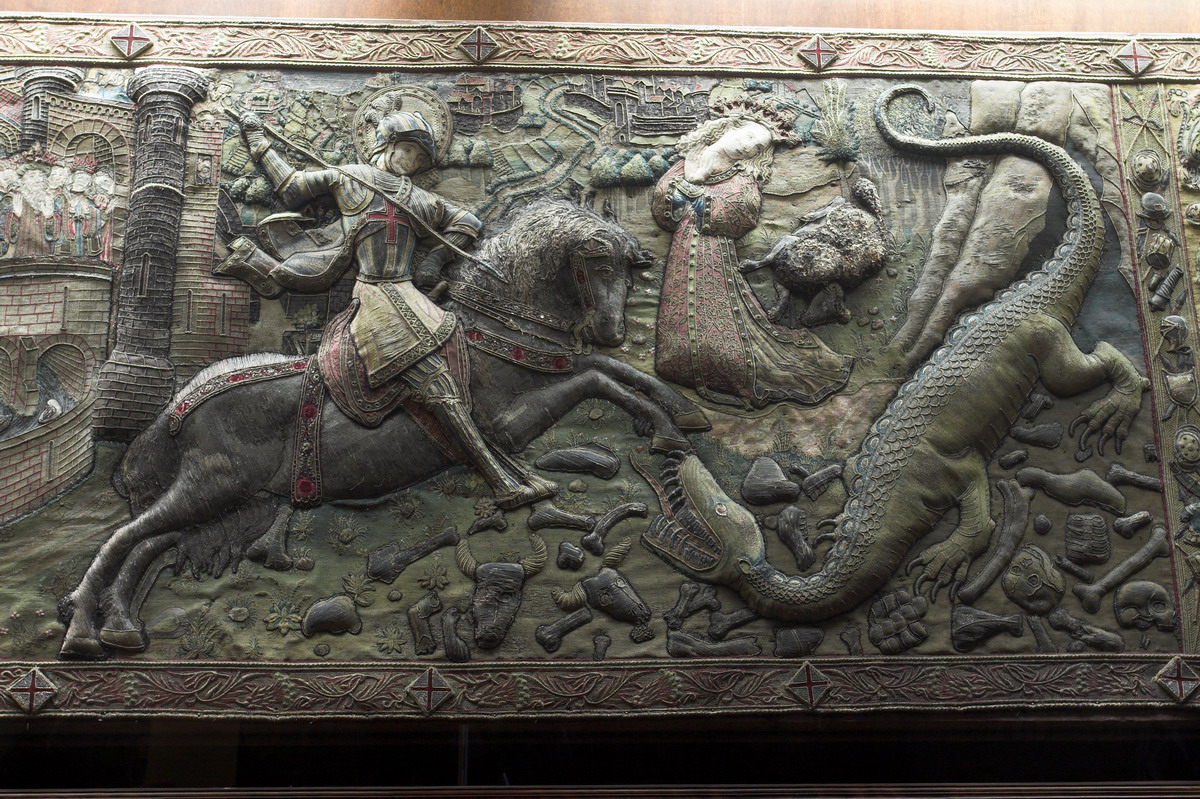
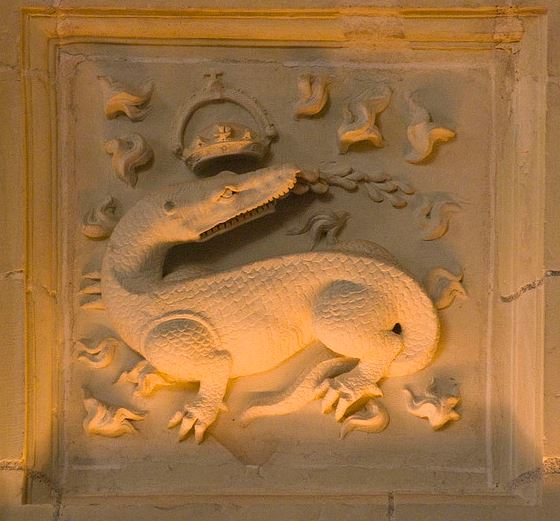
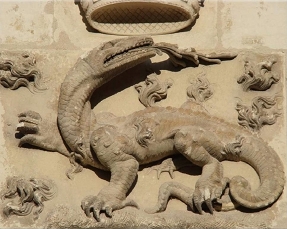
about Dragons ...
just to Note
The Uncanny Resemblance of those OLD Medieval Paintings Drawings to Tapestries...
of a Komodo Dragon

or a Monitor Lizard





edit on 32015WednesdayfAmerica/Chicago6174 by Wolfenz because: (no reason given)
Did the Thunder bird squawk causing tornadoes and lightning storms?
originally posted by: Wolfenz
From what the OP has posted a Creationist Site
about Dragons ...
just to Note
The Uncanny Resemblance of those OLD Medieval Paintings Drawings to Tapestries...
of a Komodo Dragon
or a Monitor Lizard
Considering one is laying in bed peacefully with that man, I doubt it was a komodo dragon that was terrorizing the ancients...
a reply to: cooperton
The picture of the lizard laying with the guy is of a savannah monitor not a Komodo dragon. Komodo's are pretty nasty in the wild and have an interesting hunting technique. They don't try to kill their prey rt off. They just need to get a bite in. Their saliva carries a toxin that slowly kills the prey via infection after a couple of days and their powerful sense of smell allows them to track down the carcass. Real sweethearts right? There are other currently extinct relatives of the above who were alive as recently as a few thousand years ago including megalania which grew upwards of 7m(23 ft) and weight was anywhere from half a ton to 2 tons. Megalania is a more extreme example having gone extinct approx 30ka but it was certainly still thriving in Australia when the first Aborigines set foot on the continent 60ka but more recent and rather large Monitors like the Goanna can grow larger than 8 feet. And the Nile and Savannah Monitors can get anywhere from 6-8 feet as well. Irrigardless, the amount of megafauna roaming the world until a few thousand years ago that is unknown by the average person far exceeds that which is known. Another more recent example is a 16-17 ft long crocodile with horns that lived on Madagascar until approx. 2000 years ago. The list goes on and on.
The picture of the lizard laying with the guy is of a savannah monitor not a Komodo dragon. Komodo's are pretty nasty in the wild and have an interesting hunting technique. They don't try to kill their prey rt off. They just need to get a bite in. Their saliva carries a toxin that slowly kills the prey via infection after a couple of days and their powerful sense of smell allows them to track down the carcass. Real sweethearts right? There are other currently extinct relatives of the above who were alive as recently as a few thousand years ago including megalania which grew upwards of 7m(23 ft) and weight was anywhere from half a ton to 2 tons. Megalania is a more extreme example having gone extinct approx 30ka but it was certainly still thriving in Australia when the first Aborigines set foot on the continent 60ka but more recent and rather large Monitors like the Goanna can grow larger than 8 feet. And the Nile and Savannah Monitors can get anywhere from 6-8 feet as well. Irrigardless, the amount of megafauna roaming the world until a few thousand years ago that is unknown by the average person far exceeds that which is known. Another more recent example is a 16-17 ft long crocodile with horns that lived on Madagascar until approx. 2000 years ago. The list goes on and on.
originally posted by: Peter vlar
a reply to: cooperton
The picture of the lizard laying with the guy is of a savannah monitor not a Komodo dragon. Komodo's are pretty nasty in the wild and have an interesting hunting technique. They don't try to kill their prey rt off. They just need to get a bite in. Their saliva carries a toxin that slowly kills the prey via infection after a couple of days and their powerful sense of smell allows them to track down the carcass. Real sweethearts right? There are other currently extinct relatives of the above who were alive as recently as a few thousand years ago including megalania which grew upwards of 7m(23 ft) and weight was anywhere from half a ton to 2 tons. Megalania is a more extreme example having gone extinct approx 30ka but it was certainly still thriving in Australia when the first Aborigines set foot on the continent 60ka but more recent and rather large Monitors like the Goanna can grow larger than 8 feet. And the Nile and Savannah Monitors can get anywhere from 6-8 feet as well. Irrigardless, the amount of megafauna roaming the world until a few thousand years ago that is unknown by the average person far exceeds that which is known. Another more recent example is a 16-17 ft long crocodile with horns that lived on Madagascar until approx. 2000 years ago. The list goes on and on.
(irregardless isn't a word, I don't mean to be a douche, but its better for some random person on the internet to correct you than someone in person)
So the komodo dragon is one of the surviving dragons (dinosaurs)? Round of applause for the Komodo. What about these other art pieces depicting dragons/dinosaurs www.genesispark.com...
edit on 27-6-2015 by cooperton because: (no reason
given)
Personally I don't think humans are creative enough to come up with actual completely mythical creatures.
That being said, I don't think dinossaurs are any younger than scientists believe them to be, or that they are in any way related to dragon.
It is however remarkable how completely unrelated cultures, which never had any contact, separated by thousands of miles or even hundreds of years in time could come up with the exact same myths and legends. The only possible explanations to these are, we either are somehow compelled to imagine the same things over and over again, or, in one way or another, there may be some truth that has given origin to the myths.
Personally I think the later explanation is true, mostly due to my own experience of having verified things that, to my view cannot be otherwise explained.
That being said, I don't think dinossaurs are any younger than scientists believe them to be, or that they are in any way related to dragon.
It is however remarkable how completely unrelated cultures, which never had any contact, separated by thousands of miles or even hundreds of years in time could come up with the exact same myths and legends. The only possible explanations to these are, we either are somehow compelled to imagine the same things over and over again, or, in one way or another, there may be some truth that has given origin to the myths.
Personally I think the later explanation is true, mostly due to my own experience of having verified things that, to my view cannot be otherwise explained.
originally posted by: cooperton
originally posted by: Peter vlar
a reply to: cooperton
The picture of the lizard laying with the guy is of a savannah monitor not a Komodo dragon. Komodo's are pretty nasty in the wild and have an interesting hunting technique. They don't try to kill their prey rt off. They just need to get a bite in. Their saliva carries a toxin that slowly kills the prey via infection after a couple of days and their powerful sense of smell allows them to track down the carcass. Real sweethearts right? There are other currently extinct relatives of the above who were alive as recently as a few thousand years ago including megalania which grew upwards of 7m(23 ft) and weight was anywhere from half a ton to 2 tons. Megalania is a more extreme example having gone extinct approx 30ka but it was certainly still thriving in Australia when the first Aborigines set foot on the continent 60ka but more recent and rather large Monitors like the Goanna can grow larger than 8 feet. And the Nile and Savannah Monitors can get anywhere from 6-8 feet as well. Irrigardless, the amount of megafauna roaming the world until a few thousand years ago that is unknown by the average person far exceeds that which is known. Another more recent example is a 16-17 ft long crocodile with horns that lived on Madagascar until approx. 2000 years ago. The list goes on and on.
(irregardless isn't a word, I don't mean to be a douche, but its better for some random person on the internet to correct you than someone in person)
Totally cool and I'm glad that you are comfortable admitting you are a douche. This is especially prescient considering that irregardless actually is a word in the English language that is often used in place of regardless. While most frequently used in speech, it can also be found in prose and other written works as far back as 1927. While I agree that regardless is the far more appropriate word, I opt to use irregardless on occasion simply because I can. If I likewise am a douche for correcting your tendency towards grammar nazism then I'm OK with that because at least I didn't try to correct you and end up being wrong.
So the komodo dragon is one of the surviving dragons (dinosaurs)?
Could you be so kind as to quote where I said that? The entire premise of dinosaurs surviving into modern times and being confused with dragons is entirely devoid of evidence. Large lizards in the Monitor family, some of which grew to 7 meters or longer and we're still living when humans encountered them anywhere from several tens of thousands of years ago to as recently as a couple of Thousand years is in contrast to the OP fantasy story completely true. Don't conflate facts with fantasy. Especially when on a crusade to spread superior grammar.
Round of applause for the Komodo. What about these other art pieces depicting dragons/dinosaurs www.genesispark.com...
Do you have any sources you can cite that aren't from fringe Christian apologetics? I prefer science to sci-fi when we are supposed to be talking about reality. To call those depictions dinosaurs is insulting to dinosaurs. Stylized motifs are rampant through the ancient and modern worlds across a broad spectrum of religions and cultures. It doesn't make any of them dinosaurs though. If you unearthed a stegosaurus that could be dated to the recent past then you might have a conversation. Without physical remains and verifiable dates all you have are fanciful stories.
originally posted by: Peter vlar
Totally cool and I'm glad that you are comfortable admitting you are a douche. This is especially prescient considering that irregardless actually is a word in the English language that is often used in place of regardless.
"ir" and "less" are both negatives. ""irregardless" means the opposite of what you were trying to say. It is a double negative. Regardless, you can say it all you want, just know that it is erroneous.
I prefer science to sci-fi when we are supposed to be talking about reality. To call those depictions dinosaurs is insulting to dinosaurs.
You are purposefully ignoring the resemblance because it does not fit with your current ideas on the world. Here's another one on Richard Bell's grave from the 15th century, but I'm sure you will dismiss because it also challenges your ideas (just like when you learned irregardless is erroneous, but your stubbornness could not let go of your old ideas):
www.trueauthority.com...
originally posted by: cooperton
"ir" and "less" are both negatives. ""irregardless" means the opposite of what you were trying to say. It is a double negative. Regardless, you can say it all you want, just know that it is erroneous.
Actually, it's not erroneous at all. 'Irregardless' is an accepted word in the English language, and appears in every major dictionary, with its' meaning given as "regardless".
originally posted by: cooperton
"ir" and "less" are both negatives. ""irregardless" means the opposite of what you were trying to say. It is a double negative. Regardless, you can say it all you want, just know that it is erroneous.
Actually, it's considered primarily a North American colloquialism and can be found in print as early as 1795. It 'probably' shouldn't be a word, but heck, it is!
Oh look, the Oxford dictionary
originally posted by: cooperton
You are purposefully ignoring the resemblance because it does not fit with your current ideas on the world. Here's another one on Richard Bell's grave from the 15th century, but I'm sure you will dismiss because it also challenges your ideas (just like when you learned irregardless is erroneous, but your stubbornness could not let go of your old ideas):
www.trueauthority.com...
Once more, you are using a Creationist source. Why don't you provide a peer-reviewed, Scientifically-robust source? I have an idea that it's because you won't be able to find one.
Irregardless, your premise is wrong; you have been given appropriate and more parsimonious explanations, and yet you still cling to your belief, despite no evidence.
edit on 28-6-2015 by aorAki because: (no reason given)
edit on 28-6-2015 by aorAki because: (no reason
given)
a reply to: cooperton
I'm going to ignore your inability to read the Oxford Standard English Dictionary with your harping on irregardless because it's more convenient to vent your superiority comes and wave it around like you c0@k while issuing smarmy insults under guise of facetiousness and head right to the crux here...
Do you have any science based sources that support your argument or will they all be from creationist sources where science is secondary to belief? You are creating a strawman to prop up your fallacy by insinuating that I refuse to accept something that contradicts my current ideas on the world. My current ideas change all the time when there is new evidence presented that can be tested, verified and independently reproduced. Your hokum creationist sources offer none of that. Show me evidence not impressions and interpretations. Give me dinosaur remains buried next to a human for example. The same stratigraphy will do just fine though.
I'm going to ignore your inability to read the Oxford Standard English Dictionary with your harping on irregardless because it's more convenient to vent your superiority comes and wave it around like you c0@k while issuing smarmy insults under guise of facetiousness and head right to the crux here...
Do you have any science based sources that support your argument or will they all be from creationist sources where science is secondary to belief? You are creating a strawman to prop up your fallacy by insinuating that I refuse to accept something that contradicts my current ideas on the world. My current ideas change all the time when there is new evidence presented that can be tested, verified and independently reproduced. Your hokum creationist sources offer none of that. Show me evidence not impressions and interpretations. Give me dinosaur remains buried next to a human for example. The same stratigraphy will do just fine though.
a reply to: cooperton
'If' is a conjunction introducing conditionality in the succeeding clause. 'Less' is a preposition, and is only in any sense a negative when it is used as a substitute for 'minus', as in 'nine dollars less tax.'
"ir" and "less" are both negatives.
'If' is a conjunction introducing conditionality in the succeeding clause. 'Less' is a preposition, and is only in any sense a negative when it is used as a substitute for 'minus', as in 'nine dollars less tax.'
originally posted by: GetHyped
a reply to: Masterjaden
Ah yes, the old anti-intellectual screed of "my ignorance is just as valid as scientific knowledge". No wonder you believe fanciful tales of dragons and giants.
Ah, yes the old ad hominem attack because you have no logical argument.
If you think I'm an anti-intellectual, you are living in lala land...
Jaden
originally posted by: aorAki
originally posted by: cooperton
"ir" and "less" are both negatives. ""irregardless" means the opposite of what you were trying to say. It is a double negative. Regardless, you can say it all you want, just know that it is erroneous.
Actually, it's considered primarily a North American colloquialism and can be found in print as early as 1795. It 'probably' shouldn't be a word, but heck, it is!
Yeah, to be honest, I think any word is a word as long as the listener understands what you're trying to say. If I type "their" instead of "they're", their still gunna understand what I'm trying to say. I personally appreciated the time when I was corrected on using the word irregardless (in front of a lecture hall). He's mad now, but he'll get over it.
Once more, you are using a Creationist source. Why don't you provide a peer-reviewed, Scientifically-robust source? I have an idea that it's because you won't be able to find one.
The thing is, what would the peer-reviewed journal be? "3rd graders identify ancient art as popular dinosaurs"? This is history, and historical records, both art and writing, depict beasts that look/sound eerily similar to dinosaurs. Anyone can take it or leave it. I would love to hear an explanation for each occurrence, but there are just so many... It is beyond coincidence.
If you have a kid, a young cousin or brother or whatever, show them this picture: www.omniology.com... and ask them what they see depicted on the wall.
a reply to: cooperton
I don't think anyone is actually arguing that there are some depictions in art that can be said to resemble either dinosaurs or in some cases mythical beasts. That however isn't evidence of, let alone proof of humans cohabitating with dinosaurs and their miraculously morphing into dragons. As you are referring to history and historical context, historically a lot of art is stylized and abstraction. It doesn't have to be an accurate depiction of a true living creature and then there is the fact that historically, a lot of art work was done under the influence of or after using certain plants that would give one a very different perspective on reality.
As I mentioned previously before we got sidetracked into a battle over grammar(which for the record I take entirely with a grain of salt and am not holding against you in any way or actually offended by, were it the other way around I might have been a snarky prick and been the one to have said something but I digress...), before that little segue, I pointed to several very large reptiles in the Monitor family ranging from Africa to South East Asia to Australia that currently grow anywhere from 6 feet to over a dozen feet with occasional reports from indigenous people of even larger specimens and onwards to currently extinct varieties that were alive when humans first came into contact with them that grew to well over 20 ft. with the possibility of closing in on 10m in length. The fact of the matter is though, that as cool as it would be for there to be contemporary specimens of Dinosaurs or some sort of living descendent that looks very much like extinct versions, there are no known remains, fossilized or otherwise, younger than ~65MA. If there were remains or fossils located within the same strata as human remains then the Argument may have some traction.
As it is though, sculptures, petroglyphs, carvings etc... do not give any semblance of scale or any indication of an actual physical source. To say that this has to be a truism because one is incredulous enough to want to discount coincidence isn't the same as providing evidence. It is an interesting corollary but without actual physical evidence, that's all it can be. I'm certainly open minded enough to reconsider that position entirely IF actual physical evidence was located and passed scrutiny. If I weren't open minded to possibilities like that I wouldn't have spent the latter half of the 90's chasing Neanderthal pipe dreams as the research was referred to back then because over the last 3-5 years, all of that research has been vindicated so I'm more than open to unproven hypothesis as long as the data is there to support it.
This is another classic example of the old axiom "extraordinary claims require extraordinary evidence to support them". Saying that people are creating artwork said to be dragons and it resembles dinosaurs therefore people lived with dinosaurs appears to be a syllogism fallacy.
I don't think anyone is actually arguing that there are some depictions in art that can be said to resemble either dinosaurs or in some cases mythical beasts. That however isn't evidence of, let alone proof of humans cohabitating with dinosaurs and their miraculously morphing into dragons. As you are referring to history and historical context, historically a lot of art is stylized and abstraction. It doesn't have to be an accurate depiction of a true living creature and then there is the fact that historically, a lot of art work was done under the influence of or after using certain plants that would give one a very different perspective on reality.
As I mentioned previously before we got sidetracked into a battle over grammar(which for the record I take entirely with a grain of salt and am not holding against you in any way or actually offended by, were it the other way around I might have been a snarky prick and been the one to have said something but I digress...), before that little segue, I pointed to several very large reptiles in the Monitor family ranging from Africa to South East Asia to Australia that currently grow anywhere from 6 feet to over a dozen feet with occasional reports from indigenous people of even larger specimens and onwards to currently extinct varieties that were alive when humans first came into contact with them that grew to well over 20 ft. with the possibility of closing in on 10m in length. The fact of the matter is though, that as cool as it would be for there to be contemporary specimens of Dinosaurs or some sort of living descendent that looks very much like extinct versions, there are no known remains, fossilized or otherwise, younger than ~65MA. If there were remains or fossils located within the same strata as human remains then the Argument may have some traction.
As it is though, sculptures, petroglyphs, carvings etc... do not give any semblance of scale or any indication of an actual physical source. To say that this has to be a truism because one is incredulous enough to want to discount coincidence isn't the same as providing evidence. It is an interesting corollary but without actual physical evidence, that's all it can be. I'm certainly open minded enough to reconsider that position entirely IF actual physical evidence was located and passed scrutiny. If I weren't open minded to possibilities like that I wouldn't have spent the latter half of the 90's chasing Neanderthal pipe dreams as the research was referred to back then because over the last 3-5 years, all of that research has been vindicated so I'm more than open to unproven hypothesis as long as the data is there to support it.
This is another classic example of the old axiom "extraordinary claims require extraordinary evidence to support them". Saying that people are creating artwork said to be dragons and it resembles dinosaurs therefore people lived with dinosaurs appears to be a syllogism fallacy.
Think about it like this....
The dragon is the Sun. It is hot so it of course it exhales fire. It obviously can fly through the sky. It lives at the top of a mountain. It captures virgins and takes them back to its lair. A hero has to quest up the mountain and battle it in order to win the love of the girl. Then the two of them exercise their godlike powers and create a baby so life can continue. The Bible tells us that unto the great dragon is given the power to bring the beast to life. The beast is animate life on Earth. The number of the Sun is 432 and the number of the Earth is 234. When added together they equal 666. On and on and on.
The dragon is the Sun. It is hot so it of course it exhales fire. It obviously can fly through the sky. It lives at the top of a mountain. It captures virgins and takes them back to its lair. A hero has to quest up the mountain and battle it in order to win the love of the girl. Then the two of them exercise their godlike powers and create a baby so life can continue. The Bible tells us that unto the great dragon is given the power to bring the beast to life. The beast is animate life on Earth. The number of the Sun is 432 and the number of the Earth is 234. When added together they equal 666. On and on and on.
edit on 1-7-2015 by Generation9 because: deleted the William Cooper reference
originally posted by: peter vlar
a reply to: cooperton
I don't think anyone is actually arguing that there are some depictions in art that can be said to resemble either dinosaurs or in some cases mythical beasts. That however isn't evidence of, let alone proof of humans cohabitating with dinosaurs and their miraculously morphing into dragons.
It could be coincidence that these people were drawing/sculpting images from their imagination that so happened to resemble a species that became extinct millions of years ago, but I think the more likely option is that they were actually observing these creatures and that is how they were able to depict them so accurately. Proof? Not 100%. Possibility? Absolutely
The fact of the matter is though, that as cool as it would be for there to be contemporary specimens of Dinosaurs or some sort of living descendent that looks very much like extinct versions, there are no known remains, fossilized or otherwise, younger than ~65MA. If there were remains or fossils located within the same strata as human remains then the Argument may have some traction.
There have been dinosaur bones found that still have intact red blood cells: www.nature.com...
This is another classic example of the old axiom "extraordinary claims require extraordinary evidence to support them". Saying that people are creating artwork said to be dragons and it resembles dinosaurs therefore people lived with dinosaurs appears to be a syllogism fallacy.
For creationists this helps reinforce their belief, whereas for everyone else it is food for thought. If, for example, dendrochronology, an irrefutable non-subjective dating method, would demonstrate a tree to be over 10,000 years old, I too would have to reconsider my thoughts on the world. My experiences, which I can't articulate in a productive manner, have led me to my current ideas on this world. The fact that Revelation predicted people being deceived by dragons (dinosaurs) reinforced my viewpoints - maybe not for others, but for me, it did. Even Darwin was an agnostic.
The search continues
I see that people have been reading mind-softening creationist fairy tales again and then feeding the gaping money-hungry maw of Ken Ham. I worry
about our species sometimes, I really do.
new topics
top topics
-
What if this is true?
2024 Elections: 13 hours ago, 13 flags -
Ed Dowd some good news
Medical Issues & Conspiracies: 12 hours ago, 7 flags -
Merry-Go-Round Ride
Short Stories: 15 hours ago, 6 flags -
Anyone like the Scorpions?
Music: 12 hours ago, 4 flags
active topics
-
Russia Ukraine Update Thread - part 3
World War Three • 6884 • : Freeborn -
Petition Calling for General Election at 564,016 and rising Fast
Political Issues • 69 • : Freeborn -
Results of the use of the Oreshnik missile system in Dnepropetrovsk
World War Three • 222 • : Oldcarpy2 -
Anyone like the Scorpions?
Music • 9 • : chiefsmom -
Merry-Go-Round Ride
Short Stories • 6 • : Encia22 -
Ok this is some BS now WTH
Rant • 22 • : doctordark -
Ed Dowd some good news
Medical Issues & Conspiracies • 19 • : LuciusDriftwood -
DefCon Teetering on Escalation
World War Three • 47 • : ADVISOR -
International Criminal Court Issues Arrest Warrant For Netanyahu
Mainstream News • 50 • : JJproductions -
It's toast
General Chit Chat • 10 • : Station27
